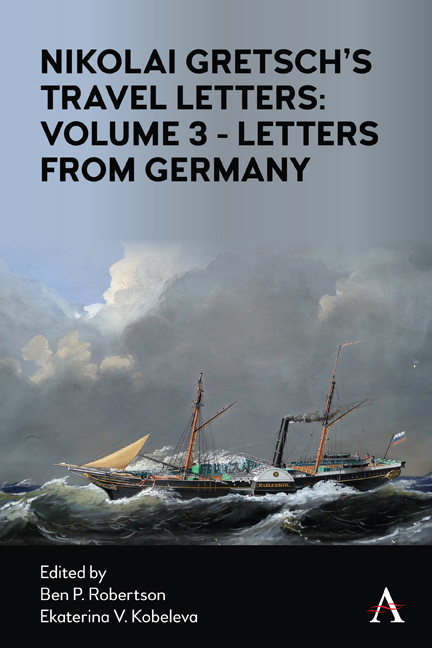Book contents
- Frontmatter
- Contents
- List of Illustrations
- Abbreviations
- Miscellaneous Frontmatter
- Introduction to Volume 3
- Letter XXXI
- Letter XXXII
- Letter XXXIII
- Letter XXXIV
- Letter XXXV
- Letter XXXVI
- Letter XXXVII
- Letter XXXVIII
- Letter XXXIX
- Letter XL
- Letter XLI
- Notes on this Translation
- Selected Bibliography
- Index
Letter XXXVII
Published online by Cambridge University Press: 22 October 2021
- Frontmatter
- Contents
- List of Illustrations
- Abbreviations
- Miscellaneous Frontmatter
- Introduction to Volume 3
- Letter XXXI
- Letter XXXII
- Letter XXXIII
- Letter XXXIV
- Letter XXXV
- Letter XXXVI
- Letter XXXVII
- Letter XXXVIII
- Letter XXXIX
- Letter XL
- Letter XLI
- Notes on this Translation
- Selected Bibliography
- Index
Summary
Vienna. St. Stephen's Cathedral. Church of St. Charles. The Augustinian Church and Capuchin Church. Imperial Crypt. Imperial Palace. Washing of feet. Technological museum. Imperial treasury. Library. Belvedere. Ambras Chamber of Arts and Curiosities. Anatomy museum. Monuments. Stock im Eisen.
Initially, I intended to stay in Vienna without hiring a lackey as I had done in Paris and in some other cities. Impossible! Vienna is such a strange labyrinth that it is difficult to find one's way. I spent three weeks in Vienna, went out several times a day, and could not do without a guide. The streets are extremely narrow; the houses are tall; on the lower floors are the shops, distinguished only by signboards; the shops, incidentally, look very similar. Vienna has a very original layout. The city itself lies in the middle and is surrounded on all sides by bastions that, in the past, protected it from enemies, but now have become the most pleasant promenade. From the bastions, a glacis, or a green square, runs in all directions, intersected by beautiful alleys, and behind the glacis are the suburbs, thirty-four in number, circumscribed by the border line that I mentioned earlier. There are many magnificent churches, palaces, and public buildings in the environs, but Vienna itself is fashionable, commercial, industrial, and the focal point of the city is the ancient, venerable cathedral of St. Stephen. In no other German city is there such noise, such fast traffic, on the streets, as in Vienna. Cabmen's carriages (fiacres) drive at a fast trot along the narrow streets, yet it should be mentioned that accidents caused by fast driving happen rarely. People say that the wagons, or wheelbarrows, are much more dangerous. The driver shouts, “Look out,” after he already has knocked over a passerby.— In Vienna, apart from the churches, there are few large, monumental buildings—whose aesthetic effect is limited by the narrow streets anyway—but the residential houses are magnificent, beautiful, and cozy.
Shall I describe Vienna? Shall I enumerate its treasures of art, sciences, history, and antiquities?— Spare me from that. You, my readers, will have to be content with a brief account about the impressions produced in me by what I saw, heard, felt, thought, during the three weeks of my stay in this pleasant, interesting city.
- Type
- Chapter
- Information
- Publisher: Anthem PressPrint publication year: 2021

